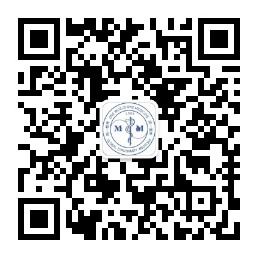目的 探讨3D腹腔镜下输卵管切开取胚缝合术治疗输卵管妊娠的疗效。方法 选取66例输卵管妊娠患者作为研究对象,根据入院时间的先后,将患者分为观察组和对照组,每组33例,给予观察组患者在3D腹腔镜下实施输卵管切开取胚缝合术,给予对照组患者在2D腹腔镜下实施输卵管切开取胚缝合术。比较两组患者的手术时间、术中出血量和术中电凝次数、术后住院时间、术后持续性异位妊娠情况,以及卵巢功能指标[雌二醇、促卵泡生成素(FSH)、抗米勒管激素(AMH)]水平,术后输卵管通畅率和生育预后情况。结果 观察组患者的手术时间短于对照组,术中出血量和术中电凝次数少于对照组(P<0.05)。两组术后均未出现持续性异位妊娠病例,且术后住院时间差异无统计学意义(P>0.05)。术后第2个月,观察组患者血清雌二醇、FSH、AMH水平与术前比较差异无统计学意义(P>0.05),但血清雌二醇、AMH水平高于对照组,血清FSH水平低于对照组,而对照组患者血清雌二醇、AMH水平低于术前,血清FSH水平高于术前(P<0.05)。术后第2个月,观察组患者的输卵管通畅率高于对照组,术后1年内的宫内自然妊娠率高于对照组(P<0.05),两组再次异位妊娠率差异无统计学意义(P>0.05)。结论 与2D腹腔镜相比,在3D腹腔镜下实施输卵管切口取胚缝合术治疗输卵管妊娠患者可缩短手术时间、减少术中出血量和术中电凝次数,对卵巢功能的影响较小,同时能提高术后输卵管复通率和宫内妊娠率。
- 中文简介
- 英文简介
- 参考文献
Objective To investigate the therapeutic effects of 3D laparoscopic-guided salpingotomy with embryo extraction and suturing in the treatment of tubal pregnancy. Methods A total of 66 patients with tubal pregnancy were selected as the research subjects. According to the order of their admission, the patients were divided into an observation group and a control group, with 33 cases in each group. The observation group was treated with 3D laparoscopic-guided salpingotomy with embryo extraction and suturing, while the control group was treated with 2D laparoscopic-guided salpingotomy with embryo extraction and suturing. The following parameters were compared between the two groups of patients: operation time, intraoperative blood loss, intraoperative electrocoagulation times, length of postoperative hospital stay, postoperative persistent ectopic pregnancy, levels of ovarian function indicators (estradiol, follicle stimulating hormone [FSH], anti-Müllerian hormone [AMH]), postoperative tube patency rate, and fertility prognosis. Results In the observation group, the operation time was shorter than that in the control group, and the intraoperative blood loss and intraoperative electrocoagulation times were less than those in the control group (P<0.05). No cases of postoperative persistent ectopic pregnancy were observed in either group, and there was no statistically significant difference in the length of postoperative hospital stay between the two groups (P>0.05). At 2 months postoperatively, there was no statistically significant difference in the serum levels of estradiol, FSH, and AMH between the observation group and its preoperative levels (P>0.05). However, the serum levels of estradiol and AMH in the observation group were higher than those in the control group, while its serum FSH level was lower than that in the control group. In contrast, the serum levels of estradiol and AMH in the control group were lower, and its serum FSH level was higher than their preoperative level (P<0.05). At 2 months postoperatively, the tube patency rate of patients in the observation group was higher than their in the control group; within 1 year postoperatively, the intrauterine natural pregnancy rate of the observation group was also higher than that in the control group (P<0.05). While there was no statistically significant difference in the recurrent ectopic pregnancy rate between the two groups (P>0.05). Conclusion Compared with 2D laparoscopy, performing salpingotomy with embryo extraction and suturing under 3D laparoscopy in the treatment of patients with tubal pregnancy can not only shorten the operation time, reduce intraoperative blood loss and intraoperative electrocoagulation times, and have a smaller impact on ovarian function, but also improve the postoperative fallopian tube patency rate and intrauterine pregnancy rate.
-
无




 注册
注册 忘记密码
忘记密码 忘记用户名
忘记用户名 专家账号密码找回
专家账号密码找回 下载
下载 收藏
收藏
